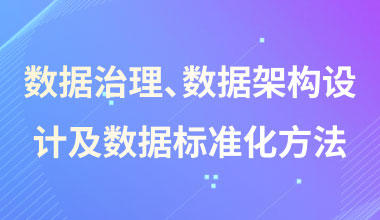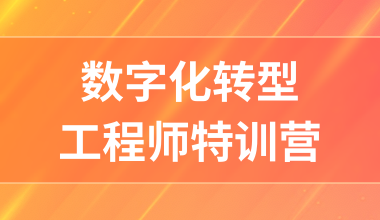Python的做事方式是什么?
今天要介绍的是关于使用简单的方法解决python问题的。作为一名编码人员,从描述数据类型开始学习和解释语言新概念的方法。那么python中的数据类型是什么? 数据类型或简单类型是数据的属性,它告诉解释器程序员打算如何使用数据。众所周知,python中最常见的数据类型是float(浮点数),int(整数),str(字符串),bool(布尔值),列表和dict(字典)。但是与C或C ++不同,Python将自动确定将数据存储为哪种数据类型。但是您需要了解数据类型,才能将数据从一种类型转换为另一种类型(也称为Typecasting或Type conversion)。让我们看一个基本数据类型(清单)的示例,以整体上理解语言和编程。

## I am simply creating a list and printing out the type of indivisual elements in the list ..
List = [1,2.0,"Hello World",True,[1,2,3,4,5],{'key':'value'}]# I am using for in loop because the size of the list is fixed ..for element in List:
print(type(element))# or you can also use list compreshension
elements = [type(element) for element in List]
print(elements)
#output //
<CLASS'INT'>
<CLASS'FLOAT'>
<CLASS'STR'>
<CLASS'BOOL'>
< class'list'> <
class'dict'>
[<CLASS'INT'>,,<CLASS'STR'>,<CLASS'BOOL'>,<CLASS'LIST'>,<CLASS'DICT'>]]
记住 —除了python提供的数据结构外,我们可以在python中创建自己的数据结构。您要做的就是创建一个类,并在该类中定义自己的方法。这 就是创建熊猫数据框的方法……但是我有一天会写它。现在,让我们坚持一些基本知识!
基本清单方法
让我们看一下一些List方法,用于从列表中插入和删除元素…
1. append:在列表中添加元素。性能:将元素附加到列表末尾的时间复杂度为o(1),而其他任何地方均为o(n)
2. remove:删除列表中的元素。性能:删除列表中元素的时间复杂度为o(n)
搜索列表中元素的时间复杂度始终为o(1)
## List Methods ...
# insertion
List.append((1,5.0))
print(List)
# seraching an element in the list which is already in a list ...
list_in_list = List[4][0]
print(list_in_list)
# deletion
List.remove(1)
print(List)
#output //
[1,2.0,'Hello World',True,[1,2,3,4,5],{'key':'value'},(1,5.0)]
1
[2.0,'Hello世界”,真,[1、2、3、4、5],{'键':'值'},(1、5.0)]
操作清单项目
1. lambda函数:它们以1行编写,用于定义自定义函数;
2. map()方法(在DataScience中也称为向量方法):使用map函数将您定义的自定义函数映射到列表的每个元素。map方法采用2个参数,您要应用的功能b。列出您想要上述功能的应用;
3. enumerate()方法: enumerate()方法将计数器添加到可迭代对象并返回它。返回的对象是一个枚举对象。
custom_list = [[1,2,3,4,5],["Cat","Dog","Dog","Tiger","Lion","Goat"]]
# custom function to find square of a number
def square_of_number(x):
return x*x
# using lambda functions to create a new list from exisitng list but with cube of each items in the list..
cube_of_number = lambda x:x*x*x
squares_of_list_items = lambda x:x*x
# using map function to apply a function to all elements of the list
new_list_of_squares = list(map(squares_of_list_items,custom_list[0]))
new_list_of_cubes = list(map(cube_of_number,custom_list[0]))
print(new_list_of_squares)
print(new_list_of_cubes)
# Using Enumerate to find the count of Each animal in custum_list
for i,x in enumerate(custom_list[1]):
print('iterater is :', i ,'and value is ', x)
#output //
[ 1、4、9、16、25
]
[1、8、27、64、125 ] <枚举对象,位于0x7f0cf44e4b40>
iterater为:0,值为Cat
迭代器:1,值为Dog
迭代器:2并且值是Dog
迭代器是:3和值是Tiger
迭代器是:4并且值是Lion
迭代器是:5并且值是山羊
发电机和装饰器:
1. Python生成器是创建迭代器/可迭代对象的简单方法。它可以在函数调用时暂停,也可以在整个程序的生命周期中通过使用next()函数在任何时间恢复。
2.装饰器是python中的一流对象。这意味着它们可以在任何函数中通过引用传递。装饰器只是一个奇特的名称,也是将函数作为参数传递给另一个函数的方式。它们也被称为可调用对象,它接受一个函数并返回或改变该函数的行为。
# Generators :
def generator():
for i in range(5):
yield i
print(generator) # output://
a = generator()
print(next(a)) # output:// 0
print(next(a)) # output:// 1
# Decorators
def function1():
print('this is function 1')
def function2(function_argument):
function_argument()
print('this is function 2')
new_object = function2(function1) # output:// this is function 1 this is function 2
# using it as a decorator function ...
@function2
def function1():
print('this is function 1') # output:// this is function 1 this is function 2
* args和** kwargs
args和** kwargs是最重要的关键字,在我的编码风格和编程实践中,我个人经常使用它们。好吧,想象一下!您正在创建函数,却不知道预期的参数数量。在这种情况下,我们使用* args,如果它是字典,则使用** kwargs。
def arr(*args):
for i in args:
print(i)
arr(1,2,3,4) # output: // 1 2 3 4
arr(1,2) # output:// 1 2
Python是一种很棒的编程语言。它易于学习且易于实施。它支持许多程序包,因此许多黑客,数据科学家和后端开发人员都使用它来执行日常任务。想了解更多关于Python的信息,请继续关注中培伟业。
- 上一篇:人工智能的顶级机器学习算法
- 下一篇:参加CISP认证和等保区别有哪些?
















 400-626-7377
400-626-7377
 录播
录播
 公开课
公开课
 题库
题库
 在线咨询
在线咨询